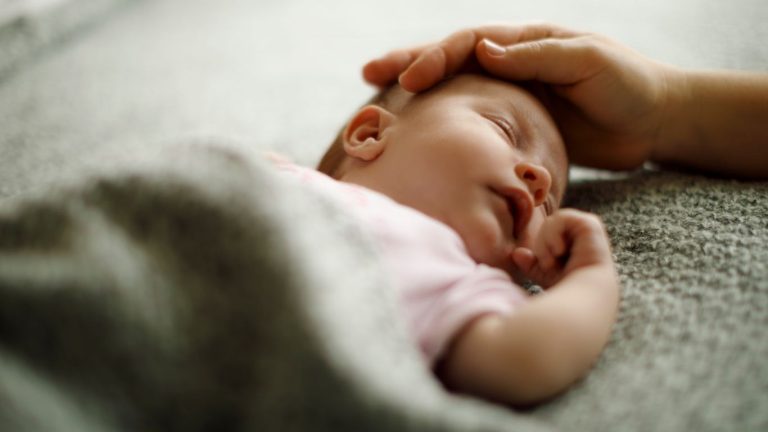As a parent, sometimes it’s hard to know how to choose safe children’s products and you’ll want to make sure the children’s products you buy and use are safe and avoid products that may cause injuries. By choosing products that meet safety standards, you can be reassured that these products are safe and reliable. Here is some information on likely hazards for your kids; how to choose safe baby walkers, children’s nightwear, toys, household cots, pedal bicycles, child restraints, bunk beds, and nursery products; and how standards help make these products safer.
Product safety standards and voluntary standards
Retailers, importers, and manufacturers need to make sure their products are safe and pass all the tests in the required standard/s. When you’re out shopping, look for a label on the product that says it meets a safety standard or ask the retailer for information about this.
Under our laws, there are compulsory product safety standards for baby walkers, children’s nightwear, household cots, pedal bicycles, and bunk beds. Businesses may also choose to meet a voluntary standard.
Baby walkers
Baby walkers can cause injuries to children, for example, from falling down stairs or from tipping over. They need to meet certain requirements and tests in the American standard ASTM F977-03 and include safety labels. Read tips on using baby walkers safely and more about the product safety standard.
Children’s nightwear
Children’s nightwear can be a fire hazard if the child gets too close to a fire or heater. Children’s nightwear needs to meet certain requirements in AS/NZS 1249:2003 (with New Zealand-only Amendment A:2008), include a fire hazard label, and be designed to reduce fire danger. Read tips on how to buy safe children’s nightwear and more about the product safety standard.
Toys
Toys with small parts that children could swallow or choke on can cause injury or even death. Toys used by children up to 3 years of age need to meet AS/NZS ISO 8124.1:2002. The standard covers toy safety and provides information about a cylinder to measure toys/toy parts. If a toy/toy part can fit completely into the cylinder without compressing it, then it is too small and does not meet the standard. Generally, if the toy/toy part is smaller than a 35mm film canister, it will not meet the standard. Read tips on toy safety and more about the product safety standard.
Several other voluntary standards cover toy safety. The AS/NZS ISO 8124 set covers the physical features, flammability, toxicity, and safety of toys, and the safety of activity-type toys. AS/NZS 62115 covers the safety of electric toys. Read more about these standards.
Household cots
Unsafe cots can cause injury or death to infants and babies, for example, if the space between bars is too wide or there are parts a child could fall on or could snag clothing on. Cots need to comply with AS/NZS 2172:2003, which covers safety requirements and tests for materials, design, construction, performance, and labelling. Read tips on the safe use of cots and more about the product safety standard.
Pedal bicycles
Children can be injured through accidents caused by the failure of a bicycle’s structure/parts, poor construction or lack of safety warnings. Bicycles need to comply with AS/NZS 1927:1998, which covers their safe design and performance. If you buy a bicycle, you should receive instructions on how to safely assemble, use, and maintain it. Read tips on using bicycles safely and more about the product safety standard.
Under our laws, cycle helmets must be worn, meet an approved standard (including AS/NZS 2063), and be securely fastened. There is also a voluntary standard for safety requirements for child carrier seats for bicycles, AS/NZS 4287. Read more about these standards.
Child restraints
Child restraints help save lives and prevent deaths and serious injuries. All child restraints should meet one of three approved standards (including AS/NZS 1754), which ensures they are laboratory tested under crash conditions. Read how to tell if a child restraint is safe to use.
Under New Zealand law, all children under 7 years of age must use an approved child restraint appropriate for their age and size. Children aged 7 must use a restraint if one is available in the vehicle. Read more on using child restraints safely.
Bunk beds
Bunk beds can be dangerous and cause injuries if children fall off the top bunk or get stuck in gaps. The voluntary standard for bunk beds is AS/NZS 4220:2010, which covers the safe design and construction of bunk beds. If you buy bunk beds, they should include a warning that top bunks are dangerous and not recommended for children under 9 years of age, and several other warnings. Read tips on the safe use of bunk beds or more about the standard and these warnings.
Nursery products
For useful advice on safe nursery products, read the Ministry of Business, Innovation and Employment’s booklet Keeping Kids Safe – Children’s and Nursery Products. It covers what products to buy and how to use them safely, and safety standards.
Useful links
Visit the Consumer Affairs/Trading Standards website for more information on keeping kids safe, including what to look for in a range of other children’s products and what to do about unsafe or recalled products.





